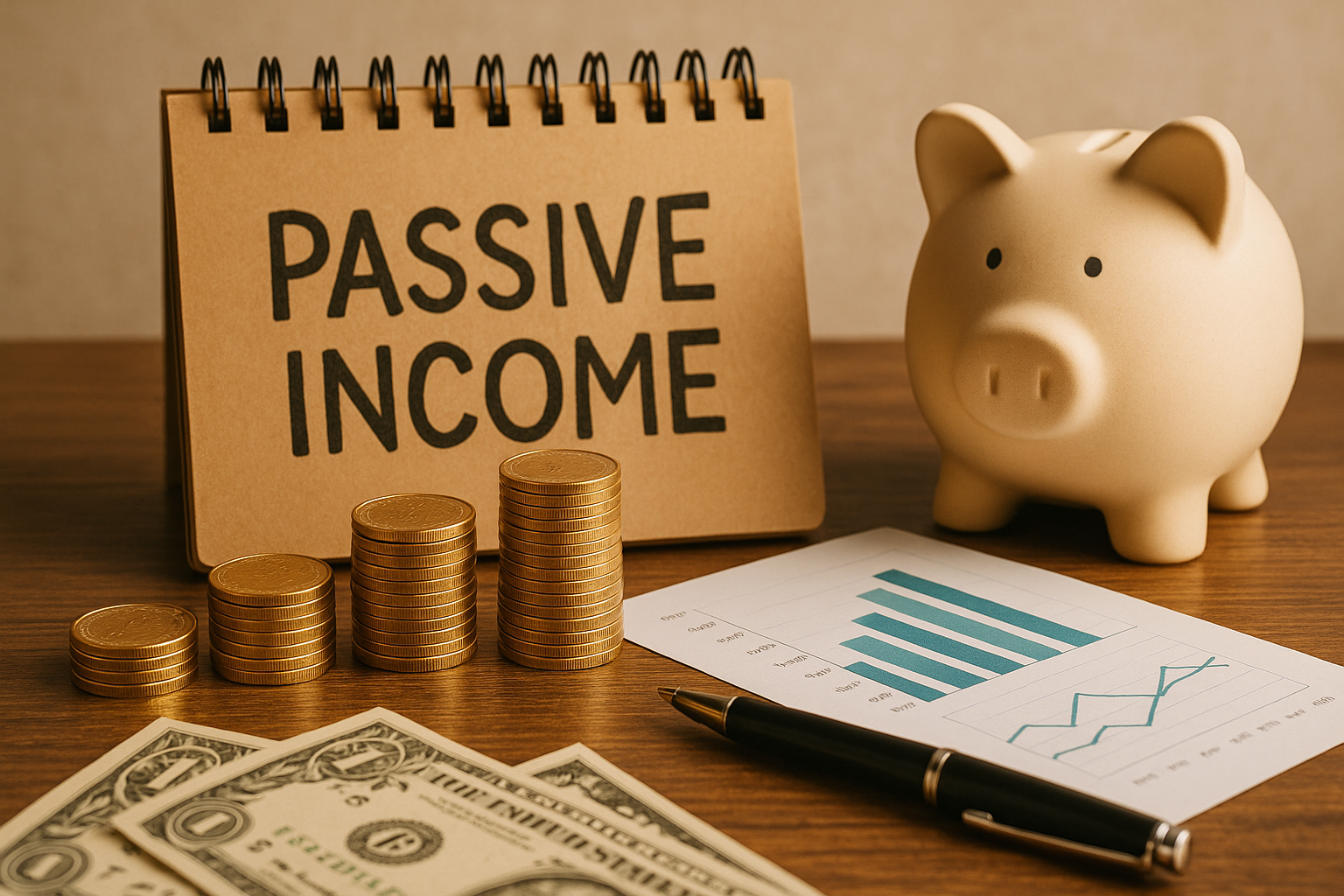Financial freedom is one of the most powerful life goals anyone can pursue. It means having enough income to cover your living expenses without being dependent on a traditional job. One of the most effective ways to achieve this is through passive income.
In this article, you’ll learn what passive income is, how it works, and the best strategies to generate it sustainably over time.
What Is Passive Income?
Passive income is money earned with minimal active effort once the initial setup is complete. Unlike a job that requires you to trade hours for dollars, passive income allows your assets, ideas, or investments to generate cash flow in the background.
Common examples of passive income:
- Rental property income
- Dividends from stocks
- Royalties from books or music
- Earnings from a blog or YouTube channel
- Affiliate marketing commissions
- Interest from savings or bonds
- Online course sales
The key is that the income continues with little daily involvement.
Why Passive Income Matters
Passive income is more than just extra cash—it’s a path to freedom. Here’s why it’s so powerful:
- Time freedom: You’re no longer bound to work 40+ hours a week.
- Security: Multiple income streams protect you from job loss.
- Wealth building: Your money earns money, creating exponential growth.
- Early retirement: Achieving financial independence sooner becomes possible.
By creating passive income streams, you give yourself more control over your life and finances.
Passive vs. Active Income: Key Differences
| Feature | Active Income | Passive Income |
|---|---|---|
| Time investment | Continuous work required | Minimal after setup |
| Scalability | Limited (time-bound) | High (can grow without your effort) |
| Examples | Job, freelancing, consulting | Dividends, royalties, real estate |
| Tax treatment | May be higher depending on jurisdiction | Often more favorable |
Understanding the differences helps you see the long-term benefits of building passive income streams.
7 Passive Income Ideas to Start Building Today
Here are the most accessible and realistic options for most people:
1. Dividend Stocks
Invest in stocks that pay regular dividends. You’ll earn a portion of the company’s profits, typically quarterly.
Pros:
- Reliable income stream
- Potential for capital appreciation
Cons:
- Requires capital to start
- Subject to market volatility
2. Real Estate Rentals
Buy property and rent it out to tenants. The monthly rent becomes your passive income.
Pros:
- Tangible asset
- Regular income and property appreciation
Cons:
- Property management required
- High initial investment
Tip: Use a property manager to make it more hands-off.
3. Create an Online Course
If you have expertise in a subject, build a course and sell it on platforms like Udemy, Teachable, or Skillshare.
Pros:
- Low overhead
- Global audience
Cons:
- Time investment upfront
- Need for marketing
4. Start a Blog or YouTube Channel
Create valuable content, attract traffic, and monetize with ads, sponsorships, or affiliate links.
Pros:
- Creative and flexible
- Many income sources
Cons:
- Time-intensive to build audience
- Income may be slow at first
5. Affiliate Marketing
Promote products or services via your website or social media and earn a commission for each sale made through your link.
Pros:
- No product creation required
- Scalable income
Cons:
- Requires audience trust and strategy
6. License Your Photography, Music, or Design
If you’re creative, license your work on platforms like Shutterstock (for images) or Epidemic Sound (for music).
Pros:
- Earn repeatedly from one piece of work
- Passive after publishing
Cons:
- Competitive platforms
- Requires artistic skill
7. High-Yield Savings Accounts and Bonds
Earn interest simply by placing your money in low-risk vehicles.
Pros:
- Low risk
- Completely passive
Cons:
- Returns may not beat inflation
Best for preserving capital and earning steady, though modest, returns.
Steps to Build Passive Income
1. Choose Your Path
Decide which method aligns with your skills, resources, and goals.
2. Start Small
Don’t aim for full income replacement from the start. Build gradually.
3. Reinvest Earnings
Use profits to grow your investments or fund additional streams.
4. Automate Where Possible
Use tools to schedule content, manage tenants, or reinvest dividends automatically.
5. Stay Consistent
Passive income takes time to grow. Be patient and persistent.
Mistakes to Avoid
Creating passive income can be life-changing, but there are common traps to avoid:
- Chasing quick money: If it sounds too good to be true, it probably is
- Neglecting the learning curve: All methods require some effort to understand
- Over-leveraging debt: Don’t take big financial risks without a safety net
- Failing to diversify: Don’t rely on a single stream; build multiple
Can You Really Live Off Passive Income?
Yes, but it takes planning and discipline. Most people start by covering small expenses—like subscriptions or grocery bills—and eventually reach a point where their passive income exceeds monthly expenses.
This is called financial independence. And from that point on, you’re working because you want to—not because you have to.
Conclusion: Build the Life You Want
Passive income is not just a financial strategy—it’s a lifestyle design tool. It gives you choices. The choice to take a break, travel, spend more time with family, or start a business without the pressure of immediate income.
Start building today. Even if the results are slow, your future self will thank you. With each step, you move closer to a life where freedom is funded by smart, sustainable income streams.

